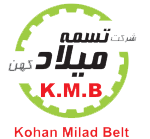PU Timing Belts are innovative high-performance power transmission belts made with a polyurethane timing belt resin body and tensioned in steel or Aram fiber. High elastic modulus of tension ropes provides good stability under load. The production process of urethane timing belts based on a unique and very complex technology, together with the high quality of the materials used, makes our belts very precise.
Polyurethane timing belt technical specifications
Polyurethane teeth
Steel rope tensile member
Polyurethane back
Mechanical and chemical properties, product characteristics
High efficiency power transmission
Free maintenance
Clean the power transmission without scattering dust
High chemical resistance, especially against oils, greases and gasoline
High wear resistance
Operating temperature from -10°C to +80°C (standard)
Special compound PU53 for high temperatures
Standard natural color, special colors available on request
Available in running VACUUM applications
Available in two-tooth implementation (DUAL)
Open circuit timing belts are made of rubber (rubber open circuit timing belt) or polyurethane open circuit timing belt with special compounds. This type of timing belt has different pitches and different teeth profiles and different materials according to their use. are produced The effectiveness of open circuit timing belts is in machines where power transmission is done more accurately and quickly.
The precise movement of the open circuit timing belt step will result in a movement without vibration and slippage.
Circuit timing belts can be made of rubber or thermoplastic polyurethane, in which fiberglass wires and threads are used. In machines that want to transfer materials or any production to another stage. They reuse the timing belt.
For example, open circuit timing belts are used in the food industry to transfer edibles, in the glass industry to transfer glass, and in the tile and ceramic industry to transfer to various parts.
To install the open circuit timing belt, you can use two clips or clamps so that they have a linear movement and carry out the work of transferring materials back and forth, and you can separate the two ends of the open circuit timing belt with a special method (connection : joint) to rotate and transfer materials.
.

